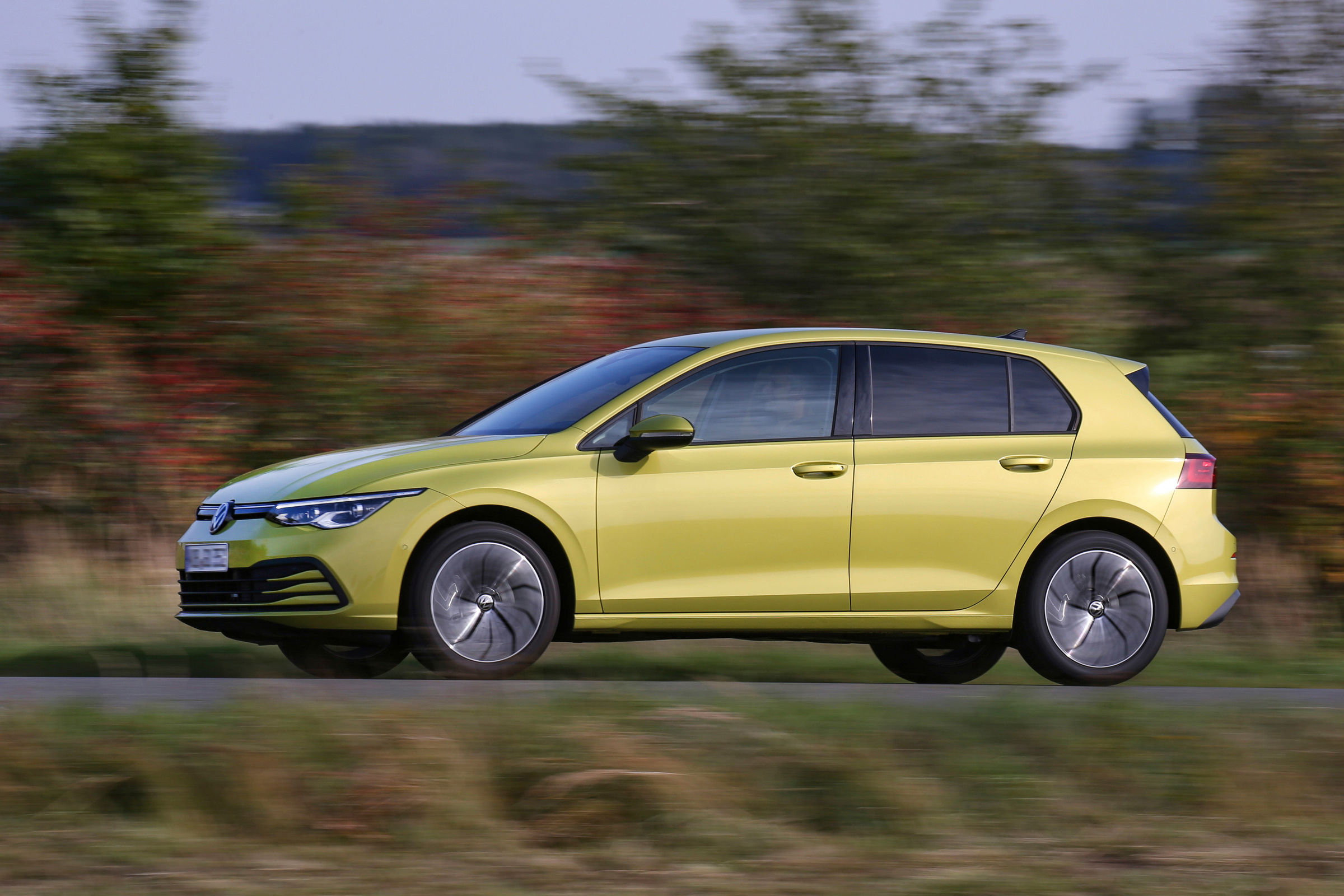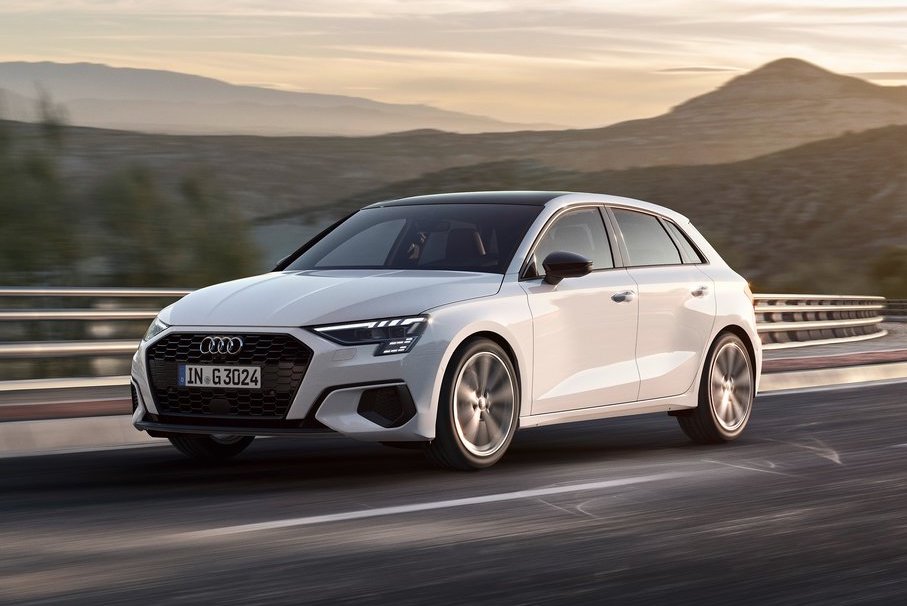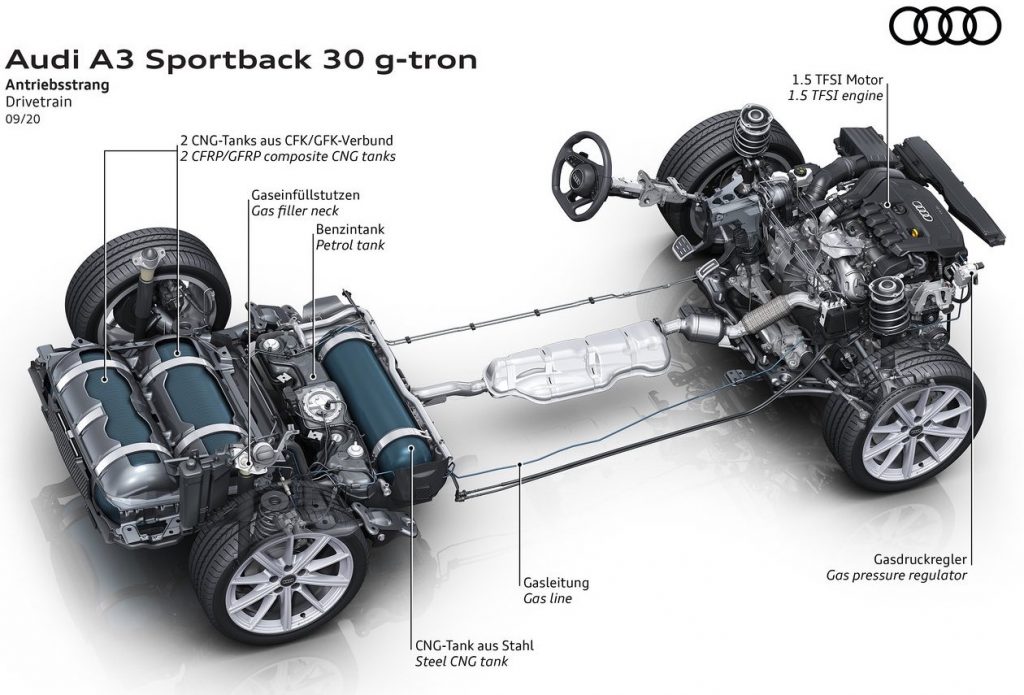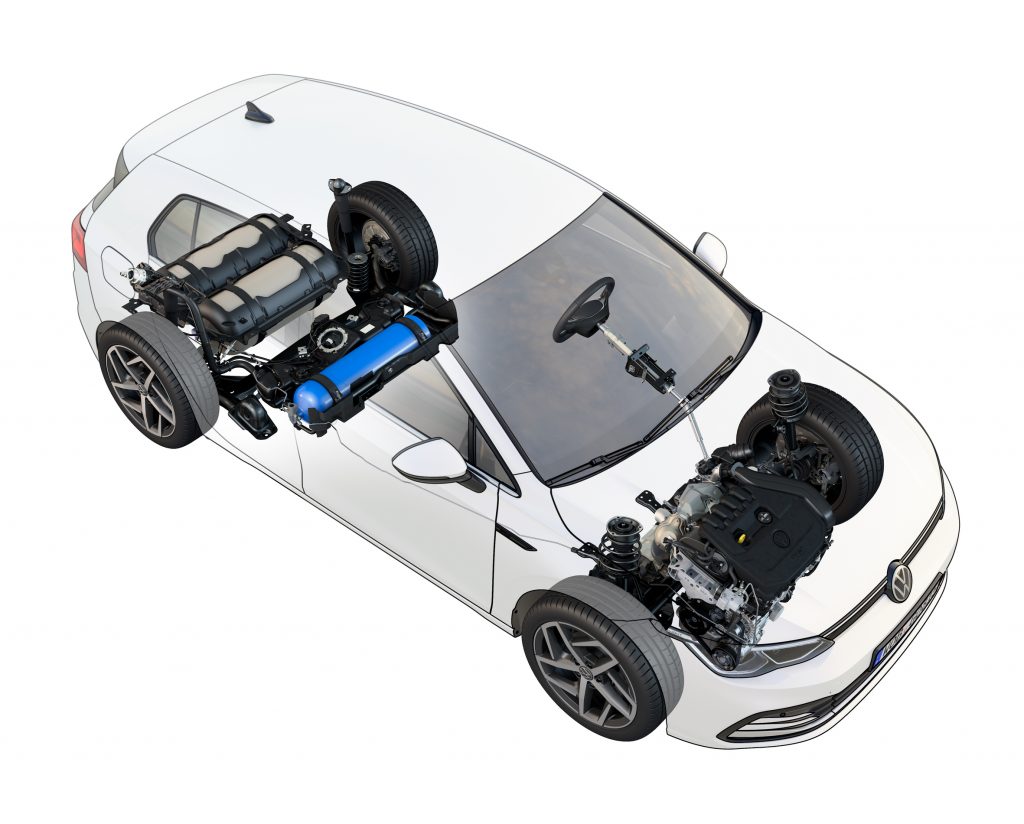New Volkswagen Golf TGI Is Powered By Natural Gas

Switch the letters around on the iconic GTI nameplate and you’re left with an eco-friendly CNG-powered VW Golf.
Aside from the normal petrol, diesel and even electric powered Volkswagen Golf, a new powertrain now finds itself propelling this popular German hatchback. And as the title of this article suggests, eco-friendly compressed natural gas is the main source of propulsion for this new powertrain.
Known as the Golf TGI, the ‘environmentally-friendly natural gas drive’ found under the hood of this new Golf is nearly identical to the one found in the Golf-based Audi A3. More specifically, the aforementioned Audi A3 Sportback 30 g-tron that was quietly unveiled a couple weeks ago.

As such, this TGI-badged Golf features the same 1.5 litre turbocharged four cylinder unit that operates on the Miller Cycle. Though slightly detuned in the Golf to only output 130 PS, as opposed to the 150 PS on the Audi. Running on a higher compression ratio (12.5:1) as compared to other engines, this innovative combustion cycle promises high efficiency and hence low carbon emissions. Claimed CO2 emissions on the VW are at 111-117 g/km, while fuel efficiency is touted to be 4.1-4.3 kg/100 km.

Continuing on the subject of fuel, the CNG-powered Golf features a total CNG tank capacity of 115 litres or 17.3 kg that is spread across three natural gas tanks located on the rear third of this hatchback. Promising a 400 km pure CNG driving range on the WLTP cycle, there is also a 9-litre petrol fuel tank on the TGI to act as a backup fuel source for when the CNG runs dry.

Other than the powertrain difference however, the Golf TGI is still very much a Golf in every other sense of the word. From the exterior, there are no visual cues to let others know that this Golf is propelled by CNG. Apart from the slightly smaller boot space too, there are no discernible difference within the cabin.

Available to order now in parts of Europe, the Golf TGI is a significant step in VWs foray into the compressed natural gas market.
While most Malaysians here might associate compressed natural gas as those used in taxis, there are legitimate environmental benefits to CNG power as opposed to conventional fluid based fuels. For one, natural gas has a much higher energy to carbon content. Thus carbon and nitrogen emissions in natural gas combustion are both significantly lower than that of petrol or diesel based combustion. An important factor to take into account, both ecologically and financially. As in most European countries, vehicle taxation is based on emissions.
Furthermore on the ecological perspective, natural gas can be obtained from bio-methane or e-gas, that is ‘produced from excess green electricity (power-to-gas)’. Making CNG power an even more ecologically conscious powertrain that will appeal to many in this increasingly eco-conscious society.

PRESS RELEASE: The new Golf is now also available with an environmentally-friendly natural gas drive: the Golf TGI is equipped with a powerful 1.5-litre four-cylinder engine with 96 kW / 130 PS and three natural gas fuel tanks. The tanks are integrated into the underbody and permit a range of around 400 kilometres (WLTP) in pure natural gas mode. The engine of the quasi-monovalent drive system is powered primarily with CNG (Compressed Natural Gas), but can also run on petrol. A reduced-capacity petrol tank serves only as a reserve, but ensures additional range.
Drivers of natural-gas-powered vehicles benefit from comparatively low fuel prices in many countries. Volkswagen is now also offering the new Golf as a TGI model with a natural gas drive and increased range – in October the Golf Variant will also be available as a TGI. The total CNG tank capacity is currently 115 litres or 17.3 kg and permits a driving radius of a good 400 kilometres in the WLTP cycle. The Golf TGI is also equipped with a petrol tank with a useful capacity of 9 litres – this is essentially a reserve tank in case the natural gas should run empty.
For driving dynamics and efficiency, the Golf TGI comes with a 1.5-litre four-cylinder petrol engine. This powerful engine is both efficient and environmentally friendly, as also demonstrated by its WLTP fuel consumption of just 4.3–4.1 kg of natural gas per 100 kilometres in combination with CO2 emissions of only 117–111 g/km. The new 1.5 l TGI engine in the Golf operates according to the innovative Miller cycle principle, a combustion process that achieves low carbon emissions thanks to its high efficiency and a compression ratio of 12.5:1. At the same time, a turbocharger with variable turbine geometry increases the charge pressure and supplies more air to the cylinders. This allows the Golf TGI to accelerate powerfully from low engine speeds at any time.
Driving with natural gas significantly reduces carbon emissions. Compared to petrol or diesel, natural gas contains a significantly higher amount of energy and has a lower carbon content. This means that driving in CNG mode produces around 25 percent fewer carbon emissions than with petrol. Refuelling with biomethane or e-gas results in an even better carbon balance. Biomethane is obtained from waste plant matter, while e-gas is produced from excess green electricity (power-to-gas). These are added to the fuels. What is more, natural gas generally combusts with lower emissions than petrol or diesel. The exhaust gas contains significantly less carbon monoxide and nitrogen oxides (NOx), while the share of soot or particulates is minimal.




